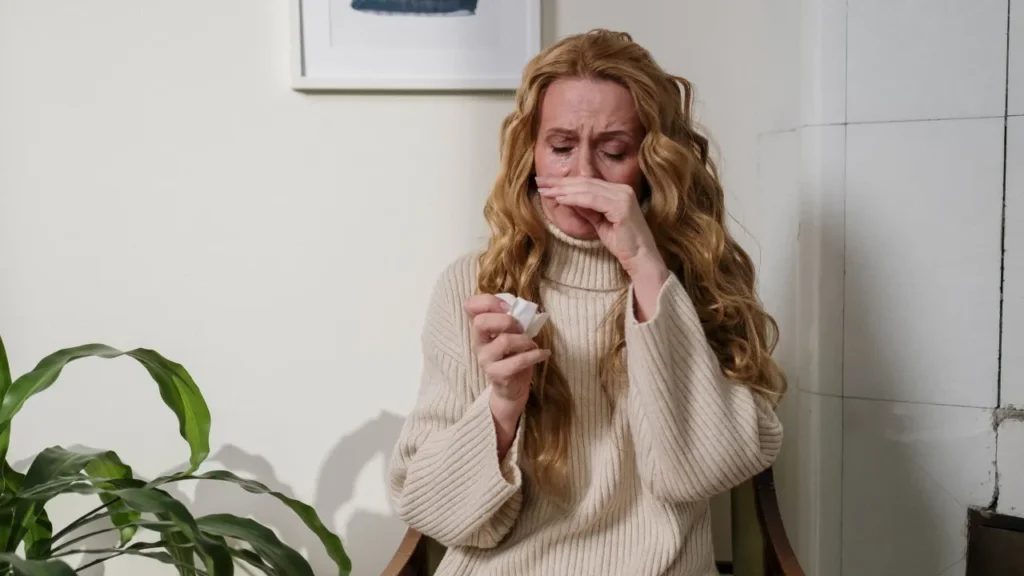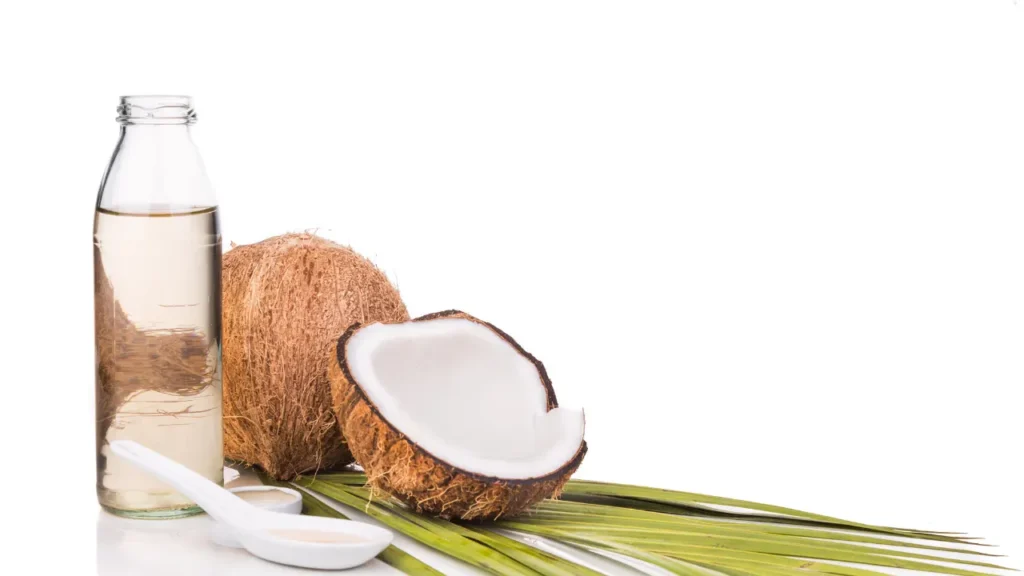Description
A chronic skin ailment known as neurodermatitis, also known as lichen simplex chronicus, causes localized scratching and itching along with the emergence of thick, scaly areas of skin. Due to the aspect of skin irritation, it is regarded as a type of dermatitis. The majority of the time, neurodermatitis exclusively affects certain parts of the body, most frequently the wrists, ankles, neck, or genital region.
According to the severity and length of the ailment, neurodermatitis lesions can take on a variety of shapes and sizes. The damaged skin may first appear reddish, swollen, and rough. The skin might thicken, scale, and be hyper-pigmented if the illness worsens. The regions that are damaged frequently have definite borders and even have a specific shape. Neurodermatitis may differ in severity and scope from person to person, with some people experiencing regional patches and others possibly experiencing more extensive symptoms.
You May Also Like:
TOP 3 MUSHROOMS FOR MEMORY– YOU WILL NEVER FORGET NUMBER ONE
OLLY GOODBYE STRESS GUMMIES REVIEWED: A LEADING STRESS RELIEF PRODUCT
Neurodermatitis: Description, Causes, And Treatment Protocol is an original (HealthXWire) article.
Possible Causes
It is unclear what exactly causes neurodermatitis. However, it is thought to be caused by a confluence of hereditary, immunological, and environmental factors. There are numerous possible reasons and associated factors:
Immune Dysfunction: Immune system dysregulation frequently coexists with neurodermatitis. The body’s reaction to allergens, irritations, and inflammatory responses is greatly influenced by the immune system. Immune system overreaction to triggers may result in prolonged itching and inflammation if you are suffering from neurodermatitis.
Genetic Predisposition: The emergence of neurodermatitis may be influenced by heredity, according to studies. You are more prone to develop neurodermatitis if you have a family record involving atopic dermatitis or another allergic illness. To grasp their impact completely, more research is required. The particular genes associated with immune activity and skin barrier health might be the main cause.
External Triggers: Many outside influences can cause neurodermatitis symptoms to appear or become worse. These triggers could be irritants, allergies, or environmental elements like the ones listed below:
- Allergens
Neurodermatitis may result from allergic reactions to particular chemicals. Several foods, dust mites, pet dander, pollen, and airborne irritants are examples of common allergens.
- Irritants
Neurodermatitis symptoms may be triggered or made worse by materials that can irritate your skin directly, including abrasive soaps, detergents, and some fabrics like synthetic materials, wool, along with chemicals from personal care items or cleaning goods.
- Temperature and Humidity
When you have neurodermatitis, extreme hot or cold temperatures, along with abrupt fluctuations in humidity levels, may lead to skin irritation and itching.
Psychological Factors: The severity and regularity of neurodermatitis flare-ups can be influenced by anxiety, emotional stress, and psychological illnesses. Some hormones and neurotransmitters might be released in response to stress, which can worsen itching and inflammation.
Scratch-Itch Cycle: The skin itch-scratch cycle, in which continual itching causes scratching, which in turn irritates the skin and causes even more irritation, is what distinguishes neurodermatitis. This loop feeds the illness and increases its likelihood of becoming chronic.

Exacerbating and Mitigating Factors
The onset and treatment of neurodermatitis are significantly influenced by aggravating and moderating factors. It is possible to reduce symptom flare-ups while improving the general control of the condition by recognizing and treating these factors. The following are some typical neurodermatitis aggravating and mitigating factors:
Irritants: Neurodermatitis symptoms can be triggered or aggravated by irritations such as particular fabrics like synthetic materials, wool, abrasive detergents, soaps, and chemical compounds. For preventing flare-ups, it is critical to recognize and keep away from certain irritants.
Allergens: Allergic reactions to specific substances or allergens can aggravate neurodermatitis. Common allergens include dust mites, pollen, pet dander, certain foods, and airborne irritants. Avoiding or minimizing exposure to these known allergens can help reduce symptoms.
Emotional Stress: Neurodermatitis is one of the many skin disorders that stress has been shown to make worse. Several neurotransmitters and hormones are released in response to emotional stress, which can cause inflammation and itching to become more intense. Reducing stress using relaxation methods, therapy, or stress-relieving activities can help minimize symptom flare-ups.
Humidity and Temperature Changes: Exorbitant or low temperatures, along with abrupt changes in humidity, can trigger or make itchy skin exacerbated. It is recommended to wear weather-appropriate clothing, utilize humidifiers or dehumidifiers as needed, and protect your skin from scalding temperatures.
Excessive Sweating: Excessive sweating might aggravate neurodermatitis symptoms by irritating the skin. Wearing breathable clothing, maintaining sufficient ventilation, and taking preventative measures like utilizing antiperspirants and being in cool surroundings are all necessary.
Mitigating Factors:
Determining and Preventing Triggers: Neurodermatitis symptoms can become worse for each person due to different factors. A symptom diary might be useful in identifying triggers, such as particular foods, activities, or environmental circumstances.
Skincare Routine: Setting up a consistent skincare practice is essential for controlling neurodermatitis. This involves gently washing your skin with mild soaps or cleansers devoid of fragrance, and then using emollients or moisturizers for keeping your skin hydrated and avoiding dryness.
Stress Management: Applying stress-reduction methods like mindfulness training, yoga, meditation, or hobby pursuits can assist in lessening emotional stress alongside its effects on neurodermatitis indications.
Avoiding Scratching: Scratching exacerbates itchiness and inflammation and further erodes your skin’s protective layer. Itching can be reduced and harm caused by using gentle methods like patting or utilizing cold compresses rather than scratching can also be reduced.
Lifestyle Modifications: Keeping up a healthy lifestyle can assist with neurodermatitis treatment. It includes engaging in regular exercise, eating a balanced diet, obtaining enough sleep, and abstaining from smoking and heavy alcohol usage.


Standard Treatment Protocol
The conventional neurodermatitis treatment plan tries to stop the cycle of itching and scratching, in addition to trying to reduce inflammation. Usually, a multidimensional strategy is used, including:
Topical Calcineurin Inhibitors: Inhibitors of calcineurin that alter the immune response and decrease inflammation include tacrolimus and pimecrolimus. They are frequently used in cases when corticosteroids become inappropriate for use in delicate skin areas. Owing to possible safety issues, these drugs are often only advised for short-term usage.
Topical Corticosteroids: It is normal to give mild to strong topical corticosteroids to treat inflammation and irritation. By following the doctor’s instructions, they are administered for a brief period immediately to the afflicted skin areas. Long-term use ought to be avoided because of possible negative effects like skin thinning and greater vulnerability to infections.
Antihistamines: When itching interferes with sleep, oral antihistamines can reduce itching and encourage sleep. Throughout the day, non-sedating antihistamines like loratadine and cetirizine are favored; at night, sedating antihistamines such as diphenhydramine can be administered to promote sleep.
Moisturizers: Moisturizers and emollients must be applied often to effectively treat neurodermatitis. These products assist in repairing the skin barrier, guard against extreme dryness, and lower the chance of flare-ups. After taking baths, moisturizers must be used right away to seal in moisture.
Trigger Avoidance: It is essential to recognize and stay away from triggers that make your neurodermatitis worse. Typical causes comprise specific textiles like synthetic or woolen materials, abrasive detergents or soaps, extremely high or low temperatures, heavy perspiration, and emotional stress. Flare-ups of symptoms can be decreased by limiting exposure to these factors.


Treatment Options
To increase the efficacy of traditional treatments, many adjuvant therapies and complementary therapies might be taken into consideration. These choices include:
Natural Remedies:
- Aloe vera gel
Natural aloe vera gel can soothe and moisturize damaged skin when applied topically.
- Oatmeal baths
A lukewarm bath infused with colloidal oatmeal can help calm inflamed skin and reduce irritation.
- Coconut oil
Coconut oil can help hydrate your skin and relieve inflammation when applied to affected regions.
- Chamomile
To reduce itching, try topical compresses or mix chamomile with bathwater. Chamomile possesses anti-inflammatory properties.
Herbal Remedies:
- Witch hazel
With its astringent qualities, witch hazel can be administered topically to soothe irritation and advance healing.
- Calendula cream
Calendula cream, which is made from marigold flowers, has anti-inflammatory properties and might be able to calm sensitive skin.
- Licorice root extract
Licorice root extract-containing topical lotions and ointments can aid in easing swelling and itching.
Nutritional Supplements:
- Vitamin D
Skin condition and immune system performance depend on appropriate vitamin D levels. Maintaining vitamin D levels can help control skin disorders, according to several research. Individual needs do differ, though, therefore supplementation must be advised by your healthcare professional.
- Omega-3 fatty acids
Omega-3 fatty acids, which are present in flaxseed oil and fish oil, possess many anti-inflammatory properties and can benefit skin health. A healthcare expert should be consulted regarding the right dosage and supplements.
- Probiotics
Probiotics, particularly strains such as lactobacillus rhamnosus GG, possess the ability to improve immune system functioning and can decrease the extent of atopic dermatitis. To determine their effectiveness in neurodermatitis, more study is required.


Conclusion
It is significant to remember that, despite the possibility of further relief, supplementary therapies must not take the place of regular medical care. To guarantee compatibility with specific conditions and to avoid any possible interactions or negative effects, it is essential to speak with your healthcare practitioner before implementing any adjunct treatment alternatives.
Additional resources for further reference
https://www.aad.org/public/diseases/eczema/types/neurodermatitis
https://my.clevelandclinic.org/health/diseases/17989-neurodermatitis
https://www.ncbi.nlm.nih.gov/books/NBK499991/
https://www.verywellhealth.com/neurodermatitis-5203070
Important Note: The information contained in this article is for general informational purposes only, and should not be construed as health or medical advice, nor is it intended to diagnose, prevent, treat, or cure any disease or health condition. Before embarking on any diet, fitness regimen, or program of nutritional supplementation, it is advisable to consult your healthcare professional in order to determine its safety and probable efficacy in terms of your individual state of health.
Regarding Nutritional Supplements Or Other Non-Prescription Health Products: If any nutritional supplements or other non-prescription health products are mentioned in the foregoing article, any claims or statements made about them have not been evaluated by the U.S. Food and Drug Administration, and such nutritional supplements or other health products are not intended to diagnose, treat, cure, or prevent any disease.
Table of Contents


